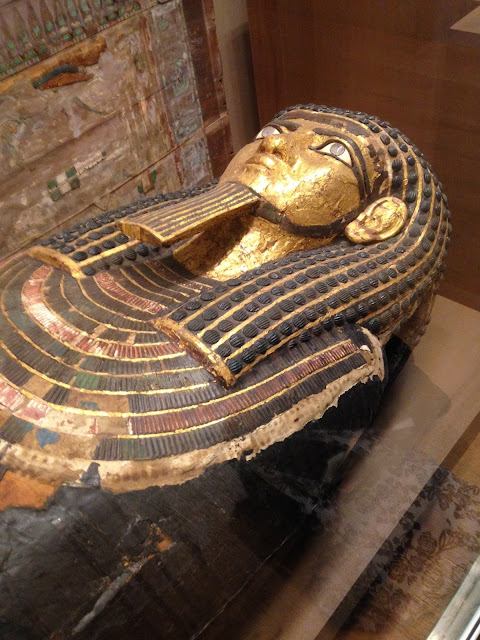Day 389 - Christ visits a Hamburg family
December 9, 20124
Gallery 612 is devoted to portraits from many countries in Western Europe, including Germany, the Netherlands, France, and Italy. The two Moroni portraits discussed on Day 244 have found their home here. So has a Bronzino portrait of a young man, hand on hip, who I assumed to be a member of the Medici family, Bronzino being their court painter par excellence. It turns out, though, that the subject was a member of Bronzino's circle of literary friends.
I thought I'd write about a Veronese portrait of a young man with his greyhound, but I decided instead to focus on the last work I looked at, which is mounted separately in the middle of the gallery rather than hung on a wall. Entitled "Christ Blessing, Surrounded by a Donor Family," the painting was made around 1571-1582 by an unknown German painter. It depicts Christ, who raises the index and middle fingers of his right hand in a gesture of blessing, seated in the middle of a family grouping. The identity of the family, like that of the artist, is unknown, but it's likely that they were residents of Hamburg, since that city's church spires are reflected in the globe on which Christ rests his left hand.
The painting takes the form of a triptych; its central panel is perhaps 48 inches wide and each of the side panels 15 inches wide, while all three panels are about 36 inches high. I am used to seeing triptychs with donor panels on the outside wings, like this one. But unlike other triptychs, this one lacks saints or prophets or other figures who mediate between the Son of God and humans. This triptych uses a highly traditional form to represent a new idea born of the Reformation: that each individual has a direct relationship with God, with no need for intercessor figures. When I studied Reformation history, I read about this new development, of course, but the artist has given striking visual form to this new tenet of belief .
We see three generations of this donor's family, whose prosperity is indicated by the heavy gold chains worn by the women and the rich furs worn by the men. As they gaze outward at us, the strong family resemblance between parents and children is evident. Christ's eyes, in contrast, are cast down; though surrounded by the family, he is very much in his own world.
The wall sign does a great job explaining the religious symbolism clearly and succinctly. But it's frustrating not to know what the inscriptions on the wall behind the donor and his wife, and behind the donor's parents, say. I check out the Met's website, and the inscriptions aren't explained there, either.







Comments
Post a Comment